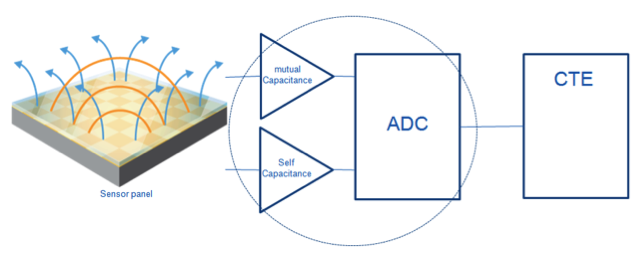Recently, I met an Atmel maXTouch customer whose smartphone brand is well recognized by consumers in West and East Africa, competing against smartphones made by global brands like Samsung and Nokia. When the customer selected our touchscreen controller for their smartphone product, they needed two features that were very important for African consumers: robust moisture performance and strong noise immunity. This is hardly a surprise as many African countries have unreliable power supplies, and surge protection is important for electronic devices; additionally, the warm climates in most African countries make robust moisture performance a basic requirement for touchscreen controllers to handle sweaty fingers, palms and faces. When the touchscreen controller has trouble in combating charger noise or moisture presence on the touchscreen, a symptom called “ghost touch” would occur – in other words, when the touchscreen automatically triggers a false touch without the presence of a finger contact at that specific location.
With Adaptive Sensing technology, Atmel’s maXTouch T-series scans the touchscreen of a smartphone using both mutual-capacitance and self-capacitance sensing.
Mutual-capacitance enables true multi-finger touch operations, such as multi-finger gestures and rotations used in gaming apps. However, self-capacitance sensing is much less sensitive to the presence of moisture or water droplets than mutual-capacitance. Atmel’s Adaptive Sensing technology combines the analog signals of both self-capacitance and mutual-capacitance, allowing the embedded maXTouch microcontroller to intelligently determine moisture presence through obvious differences in both measurement deltas for corresponding touch locations. As seen in the example below, here a maXTouch device combines both set of signals to eliminate false touch (a.k.a. ghost touch) typically associated with the presence of moisture on a touchscreen.
 I should point out that a smartphone with an excellent water-resistant rating does NOT necessarily mean that it has a robust moisture performance for its touchscreen. Here is a tidbit of consumer feedback on a premium smartphone with IP58 rating:
I should point out that a smartphone with an excellent water-resistant rating does NOT necessarily mean that it has a robust moisture performance for its touchscreen. Here is a tidbit of consumer feedback on a premium smartphone with IP58 rating:
In comparison, the OEM customer designs smartphones for African consumers that can offer excellent touch performance with the presence of moisture, thanks to our maXTouch T-series. The maXTouch mXT640T series of touchscreen controllers dynamically switches into a Self-Capacitance based single-touch mode when touches are detected in the presence of significant water. This meaning, the normal touch functionality of a mXT640T touchscreen will be maintained for as long as possible before eventually switching to a single touch operation to maintain reliable operation and prevent false touch conditions. The picture below illustrates how we set the bar for superior water/moisture performance in the market:
All in all, a touchscreen powered by Atmel’s maXTouch T-series controllers can support true multi-finger operations with the presence of moisture. Even in a rainy condition where water falls down to your smartphone, the system dynamically maintains reliable touch operations and prevents false touches, so that when you press a speed-dial for Uber in the rain, your phone will not innocently call your ex-girlfriend instead.





LG Networks provides budget-friendly Computer Support and Managed IT Services for companies throughout Dallas, Garland and Plano area.IT Support Dallas
LikeLike
Pingback: Fotografier på chassit för Sony Xperia Z4 » KATHING